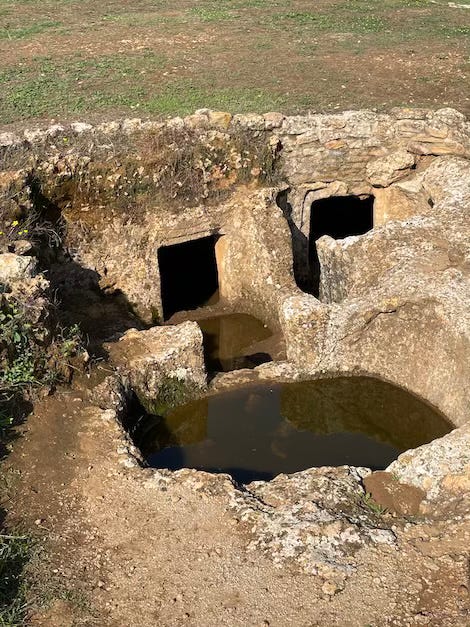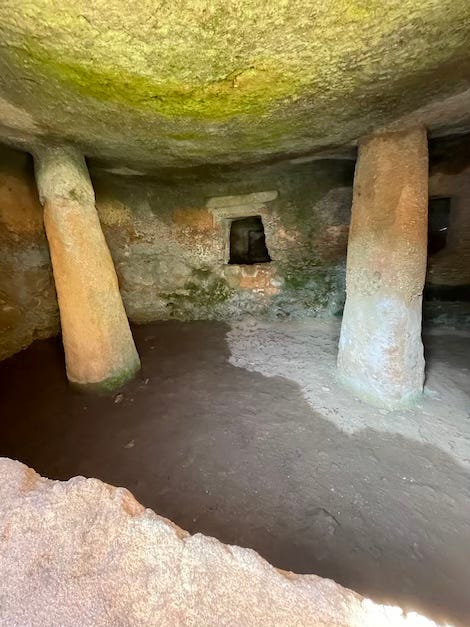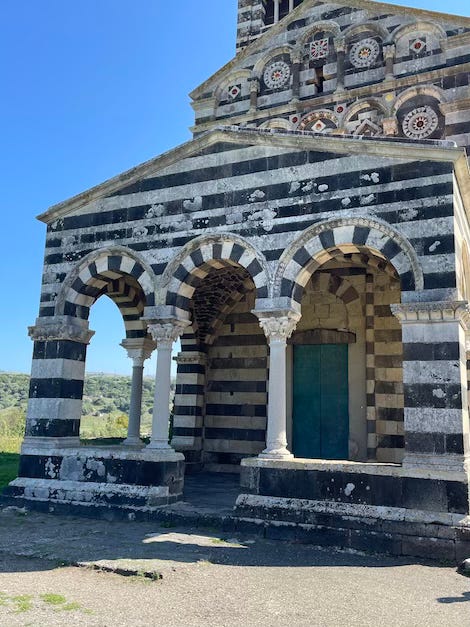Looking into the past, part II
Sardinia turned out to be very interesting from a historical point of view. The island introduced us to a new civilisation, the Nuragic culture. The Nuragic civilisation was established in Sardinia, Italy, during the Bronze Age, approximately from the 23th century BC up until the Roman colonisation in 238 BC. Their origin is disputed but experts think they were related to the Beaker culture. The name of the culture comes from the characteristic monuments they built, the nuraghes, which is a tower-fortress type of construction, quite extraordinary. It was used both for living in and for defensive purposes. No similar buildings exist anywhere else in the world. You find over 7000 nuraghes in Sardinia today. No written records exist from this civilisation. They lived on agriculture; farming and animal care, fishing and trade. Sardinia also held a rich variety of metallurgy, silver and copper which were mined. The island has even been identified as one of the earliest silver centres in the world.
Su Nuraxi di Barumini
The Barumini complex is the finest and most complete example of the Nuragic prehistoric architecture. We arrived there late in the day, and were so lucky to be in time for a guided tour in English. Su Nuraxi is an amazing building complex and challenged my claustrophobia. The complexed is believed to have been built by a single family or possibly clans. With the evolvement of society, the initial defensive structures developed to include residential houses.
The tower was originally over 18.5 metres high, today without the top chamber. The buildings are intricately connected, almost like a labyrint, with four surrounding towers, linked with a stone wall surrounding the buildings. The houses surrounding the fortress were constructed with several small rooms, and used as living quarters. In the 2nd century BC the Romans came and these kind of building projects went out of use. Although it was abandoned already in the 6th century BC, there are signs of occupation later on, maybe as late as the 3rd century CE.
Amazing complexes, and this one is very well preserved. The guide took us into small alleys, corridors (claustrophobic) in order to come into the very heart of the fortress. Standing down there in the courtyard, looking up, you either get a sense of being trapped, or, maybe you are sure that nobody will be able to conquer the fortress?
Necropolis di Anghelu Ruju
As we continued our tour north, we discovered another archeological site close to the road. We stopped to investigate. Turned out to be a pre-nuragic necropolis of a very unusual sort, and the largest in Sardinia. The field did not look so impressive when we entered, but walking around we saw the burial chambers from a long ago past, dug out of the ground. At least today, it might have been on ground level in those days.
The necropolis was discovered in 1903, like many of these kind of sites, by accident. The winery Sella & Mosca were constructing a farmhouse and found a human skull and a tripod vessel when they started digging. The first excavations discovered ten “domus de janas”, and over the years 38 such burial sites have been discovered. Numerous grave goods founds helped date their origin to the time of the Ozieri culture, 3200-2800 BC. Further finds were various weapons suggesting that people living here were hunters and warriors.
Other interesting finds were silver rings, copper daggers (originating from Spain) an awl (from France) a copper ring (eastern European style) and an axe (from Britain) indicating that the Sardinians of the day were involved in international trade. Carvings of long-horned bulls’ head were found in the graves, making the experts believe they were supporting the “Mother Goddess”, possibly indicating a sort of Sun cult.
Architectural beauties
To end this newsletter a few images of two beautiful old churches we visited.
Church of Saint John Baptist 'di Sinis' - Byzantine and Romanesque architecture. The central part of the church was probably built in the 6th century AD. Later on between 9th and 11 centuries, the structure was extended.
Chiesa della SS, Trinità di Saccargia - The church was completed in 1116 on the ruins of a pre-existing monastery. A couple of years later it was extended with a new façade and a bell tower. At the end of the 12th century an unknown artist painted frescos inside the church.

















